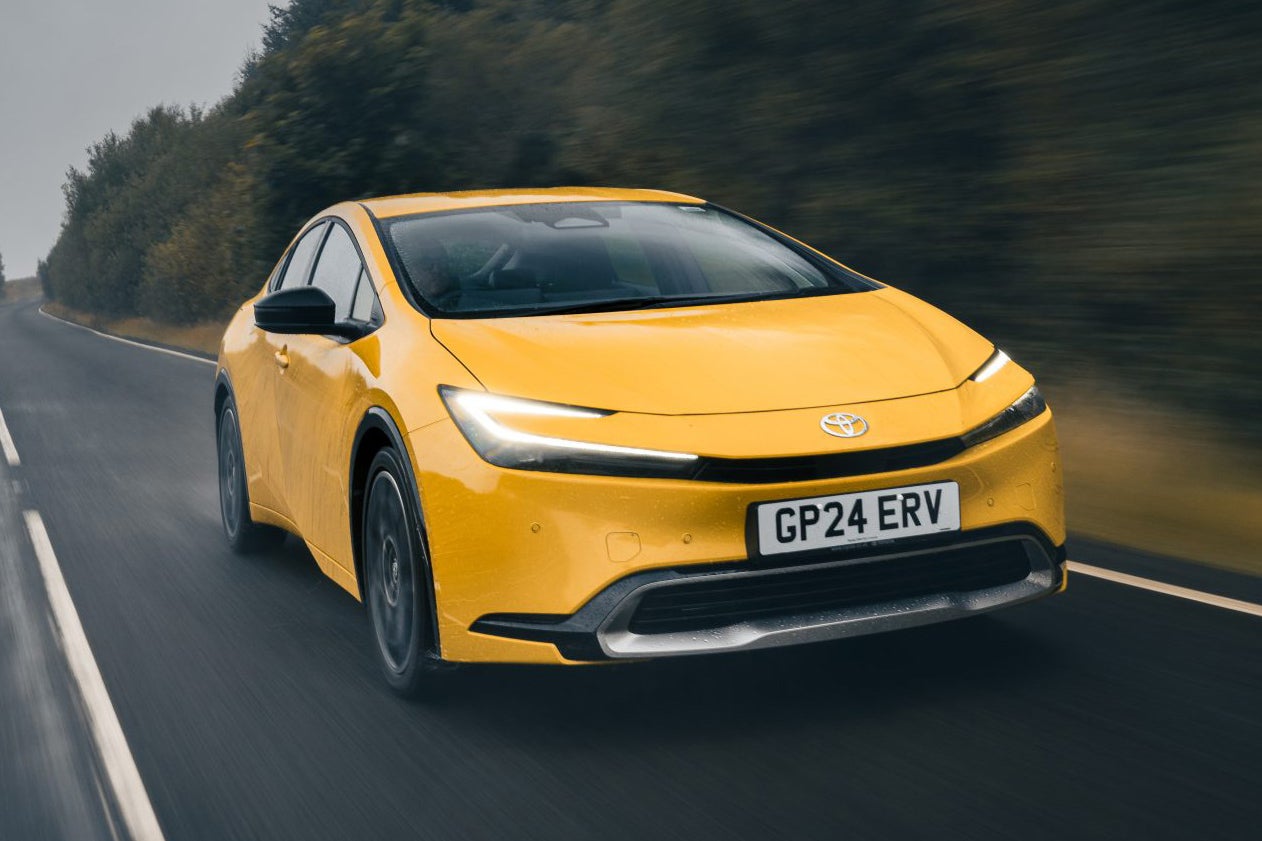Toyota Prius Review 2025: Price, specs & boot space
Written by Al Suttie
Quick overview
Pros
- Elegant looks
- Enjoyable to drive
- Superb build
Cons
- Rear seat and boot space
- High entry price
- Petrol engine can be noisy
Overall verdict on the Toyota Prius
“The car that started the shift to hybrid and EV power is much sleeker than ever before as the Toyota Prius adds style to its many other talents. It's also enjoyable to drive rather than just worthy in the way earlier Prius generations were. This is a truly desirable car.”
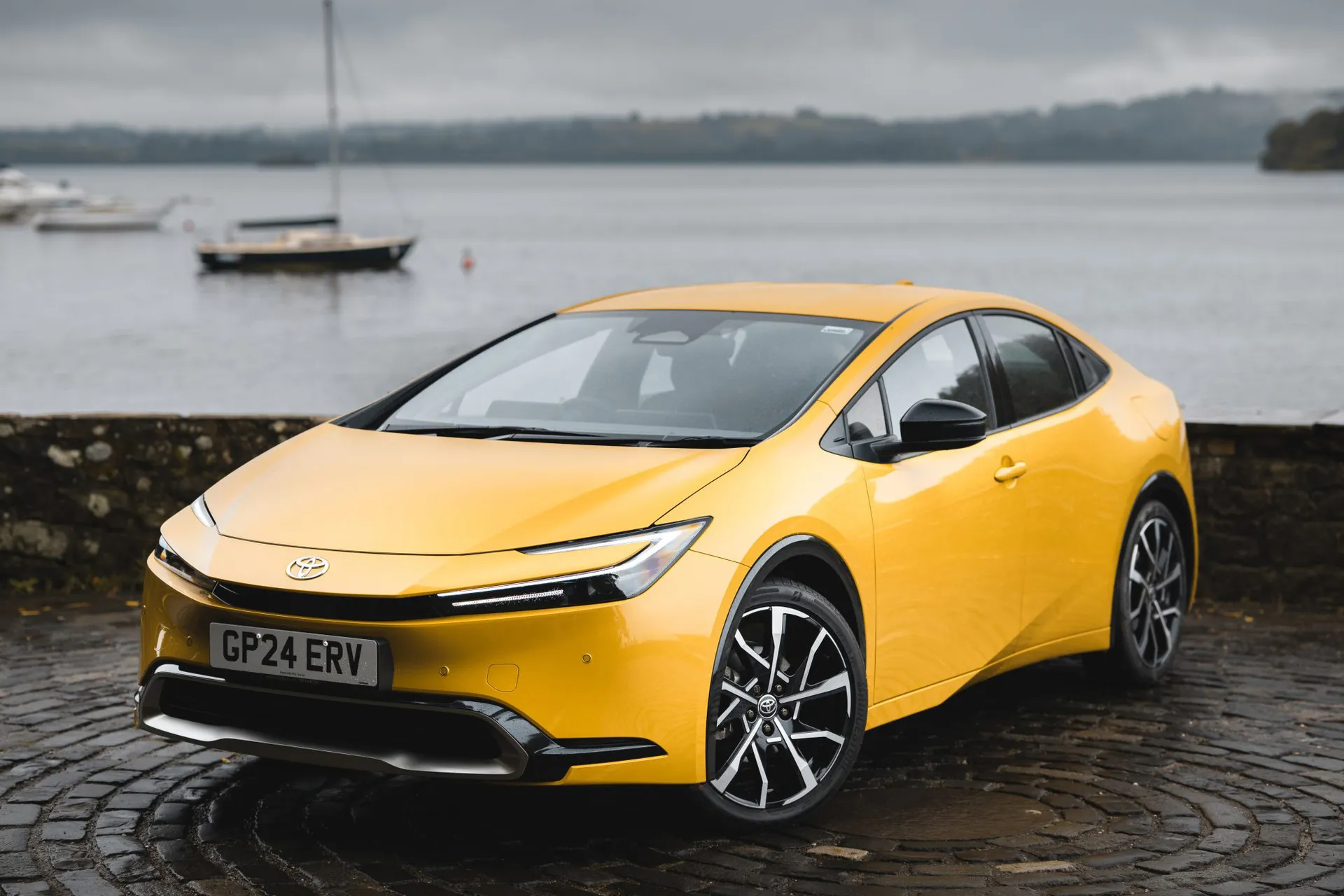
Toyota has never had a problem with drivers buying into the Prius as a greener option than many family hatches. Where it has struggled is luring them in for the way the Prius drives. That's no longer an issue, as we'll find out in this Toyota Prius review.
Aside from the handsome looks of this Prius, replacing the slightly try too hard appearance of the car it replaces, the biggest step change here is how the car drives. Where once the Toyota Prius was all about maximising economy and driving dynamics didn't get much of a look in, this one is genuinely fun to be in.
It helps this Toyota Prius comes with 223PS, generated between the electric motor and 2.0-litre petrol engine. That's substantially up on the car it's replaced and delivers 0-62mph in a rather hot hatch-like 6.8 seconds. Add in superb ride comfort, nimble handling, and excellent refinement and the Prius is a car for all occasions.
It still comes with an automatic gearbox as the only option but it works smoothly and easily, while the electric-only running mode allows up to a claimed 47 miles depending on which trim level you choose. Toyota also reckons the Prius can deliver as much as 564.9mpg, though this does require you to make full use of its EV capability at all times.
As a plug-in hybrid, the Toyota Prius can be used an EV for most of the time if you choose. However, there is the back-up of the petrol engine. Work it harder and it gets a little noisy, which is one of the few downsides of the Prius.
Other negatives include a small boot that's more like that of a supermini, while rear headroom has been sacrificed for the coupe-like roof line.
However, the Toyota Prius is generously equipped, cheap to run, and for many will be an easier car to live with than a full EV.
Looking for a used car for sale? We've got 100s of Toyota Approved Used Cars for Sale for you to choose from, including a wide range of Toyota Corolla cars for sale. If you're looking for the older version, you need our used Toyota Prius (2016-2022) review
Is the Toyota Prius right for you?
Plenty of Toyota Prius customers will move to this car from a previous generation of the same model, such is the loyalty to the car. However, we can see others being lured in by the car's taut lines and the appeal of low running costs, especially company car drivers moving away from petrol or diesel.
The Prius is also a stepping stone for some drivers towards a full EV, providing the safety net of the petrol engine for longer journeys. Then again, some drivers just need the easy range and rapid charge times, which makes the Prius a very sound choice.
What's the best Toyota Prius model/engine to choose?
Whichever Toyota Prius you choose, they all come with the same 223PS power output provided by an electric motor and 2.0-litre petrol engine driving the front wheels. That leaves your only real choice between Design and Excel trims, with the former the cheaper model and the one we'd choose. Excel offers more equipment, but the Design is far from sparsely fitted out and it's £2500 less.
What other cars are similar to the Toyota Prius?
If you're in the market for a plug-in hybrid like the Toyota Prius, it's hard to ignore the Peugeot 308 and Volkswagen Golf that share this drive set-up.
You might also consider the more SUV-like Mazda MX-30, but perhaps the Prius' biggest challengers lie in the BMW 330e and Mercedes-Benz C300e. Both of the Germans are a bit pricier but they are also quicker, yet the Toyota rivals them in the style stakes.
Comfort and design: Toyota Prius interior
"A little bit of practicality has been traded in this Toyota Prius to achieve its distinctive, sporting profile. As a result, rear seat and boot space are not as generous as in earlier Prius generations or some current rivals."
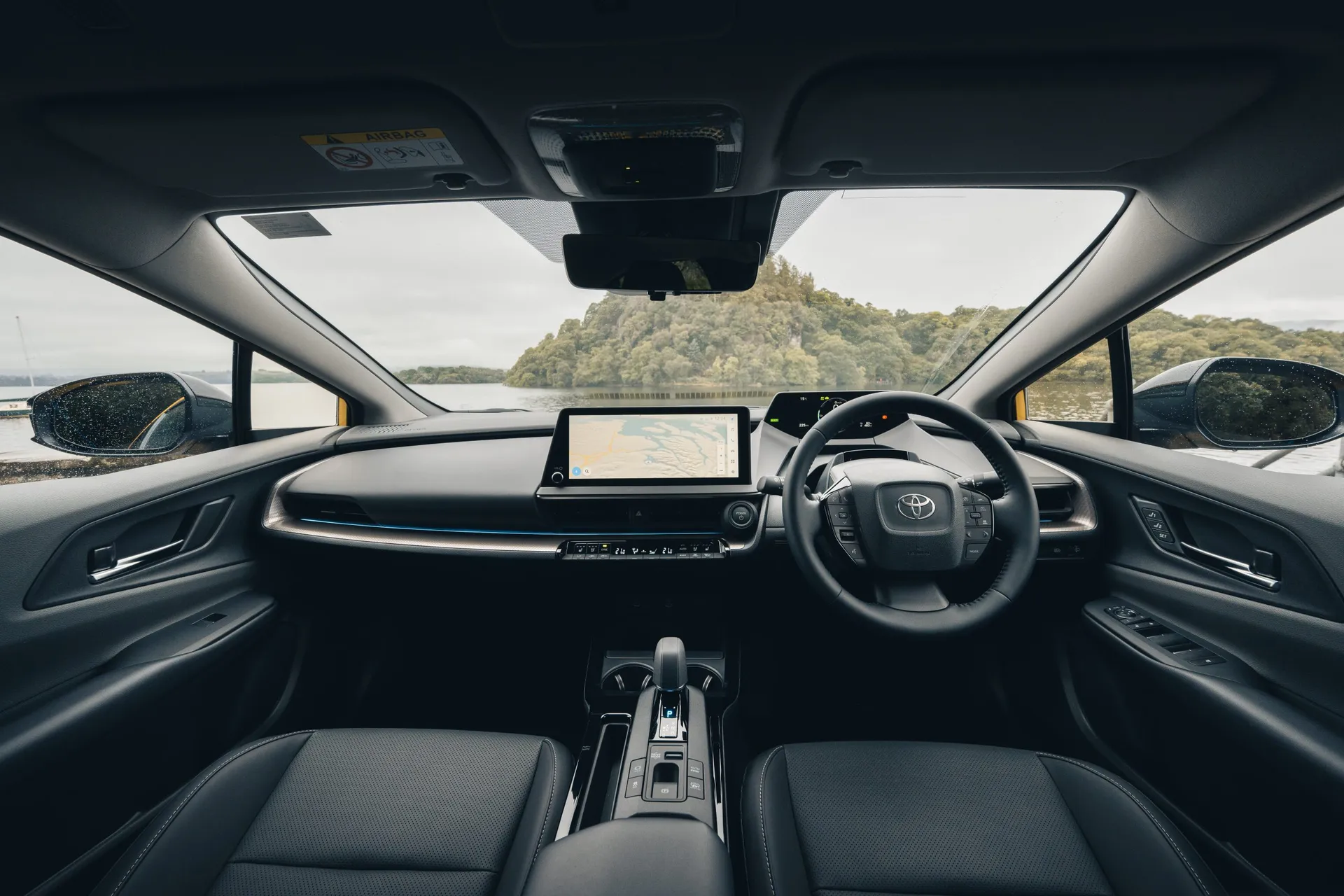
How much you will miss that rear head room will depend on how often you carry adults rear passengers. Minicab drivers may well be upset at this, but for most Prius owners it won't be much of an issue with children sat back here.
If room for adult heads is a consideration, there's nothing to worry about when it comes to space for other parts of the human anatomy. Legs, feet and shoulders are all afforded decent room, and you can even fit a third person in the middle of the rear bench in comfort.
Take a seat in the front of the Prius and it's all good. Loads of room, plenty of adjustment in the steering wheel and seat. Both trims have an electrically adjustable driver's lumbar support, but only the Excel has electric seat adjust, as well as heated and ventilated front chairs.
What both trims have in common is the steering wheel can obscure the lower part of the 7.0-inch driver's digital display. Not an absolute red line not to buy the Prius, but a small irritation that you notice and have to either live with or find a different driving position to deal with it.
Quality and finish
Come on, we're talking about a Toyota here. Sure, some of the materials could look a little less sombre in the resoundingly dark-trimmed interior, but you're not going to complain about the fit, finish and solidity of the Prius' cabin.
All of the controls work with a well oiled precision and the buttons on the dash, of which there are more than most cars nowadays, all work with a positive on-off action. It all adds to the feel that this Prius is a car that will look as good in a few years' time as it does brand new.
Infotainment: Touchscreen, USB, nav and stereo in the Toyota Prius
A 12.3-inch infotainment touchscreen is fitted in the Toyota Prius and positioned high in the centre of the dash. It's easy to see and read while driving thanks to reasonably large icons and text, but the menu buttons on the left-hand side of the screen can be a bit of reach from the driver's seat. If that's an issue, voice commands can be used.
Both trim levels of the Prius come with sat-nav included with the touchscreen, which also has wireless connection for Apple CarPlay. You need to attach your phone via wire to access Android Auto, and there's no wireless phone charging pad in the Prius, which seems like an oversight. There is Bluetooth connectivity, however, and two USB-C connectors in the front of the cabin.
Space and practicality: Toyota Prius boot space
If the Toyota Prius has a weak link in its armour, it's the limited amount of boot space on offer. Due to packaging the battery and its associated gubbins, some of the boot capacity is lost. That's a bit of a blow for a car that is aimed at family buyers.
With the rear seats in place, you have up to 284-litres of space up to the line where the load cover normally rests. It's not desperately small in the boot and you'll fit three or four average suitcases without an issue plus some soft bags. There's also a large opening when the tailgate is lifted up, and the rear seats split 60-40 for added versatility, but it's not as useful as a Honda Civic's luggage bay.
Handling and ride quality: What is the Toyota Prius like to drive?
"Toyota has injected a sense of pleasure and enjoyment into the Prius, making it a car you can choose with your heart as well as your head now."
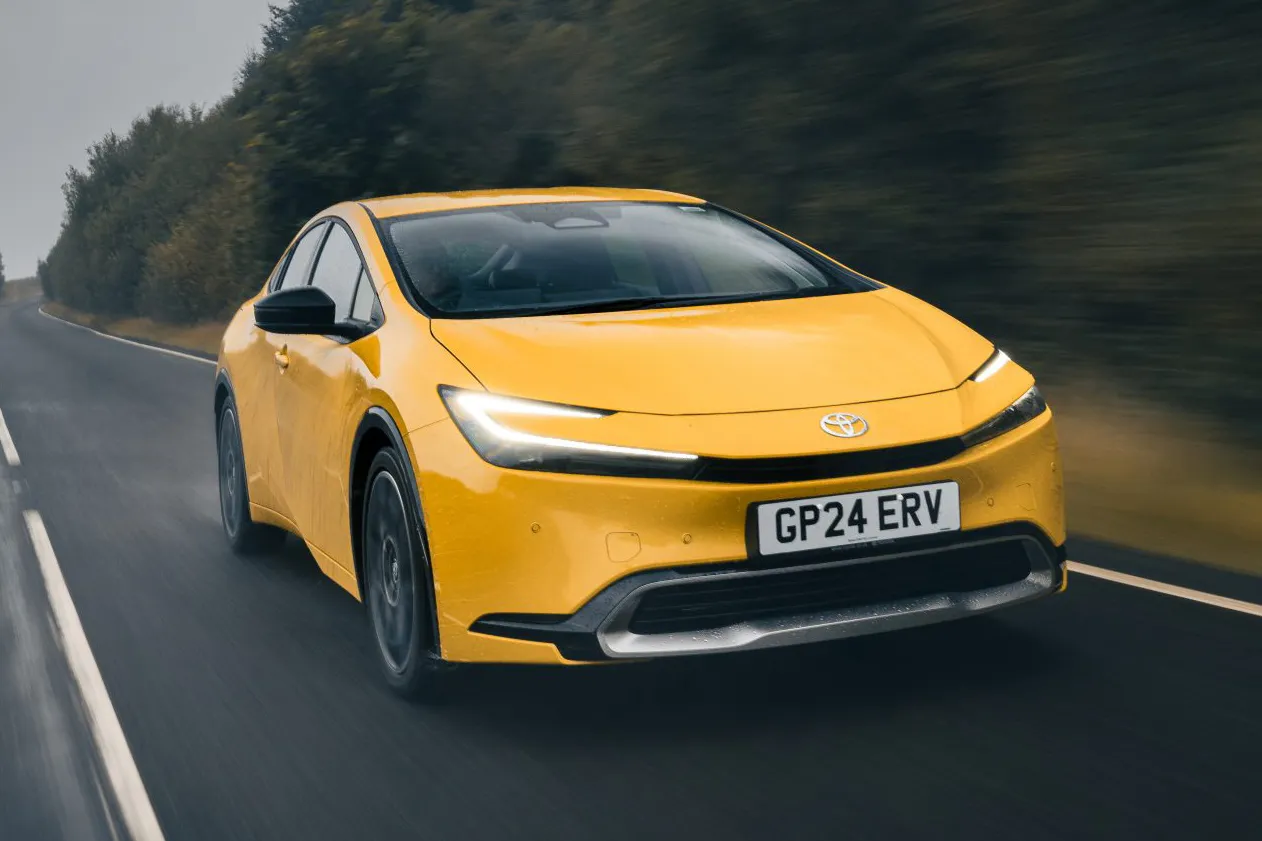
Where once the Toyota Prius was a car chosen for all the right rational reasons, you can now also make your pick thanks to the way it drives. It's all down to how the Prius now glides over rough roads and maintains its composure through corners.
With Prius generations of the past, both of these elements were undertaken with a grudging stiffness to the car's reactions. Now, the Prius flows along in serene comfort and, usually, lots of hush - we'll come to this when talking refinement.
The Toyota Prius now-found enthusiasm for driving is backed up by strong performance. The combined efforts of the petrol and electric motors generate 223PS and that's enough to see the Toyota from 0-62mph in 6.8 seconds, which is hot hatch quick. Top speed is a modest 109mph, but that's not a concern on UK roads and the Prius is very happy cruising on the motorway in assured comfort.
What engines and gearboxes are available in the Toyota Prius?
Toyota sticks to a single power choice for the Prius, which uses a 2.0-litre petrol engine and an electric motor that both drive the front wheels. The can do this together or separately depending on which is best suited to the situation or the demands of the driver.
With a total of 223PS from both petrol and electric energy sources, the Prius has strong acceleration when you want it, covering 0-62mph in 6.8 seconds. It can also pull away in EV mode, which is its preferred state for this, and can cover up to 47 miles on battery power alone in Design trim, or 44 miles for the Excel on its larger 19-inch wheels.
The CVT (continuously variable transmission) in the Prius is, as before, one that usually works well but can see the petrol engine's revs soar if you want the most acceleration possible. However, the gearbox is smooth in operation and the stubby selector will be familiar to anyone with recent experience of Toyota cars.
Refinement and noise levels
In almost every situation, the Toyota Prius is quiet, refined, and a pleasure to sit in.
We said 'almost' for a reason, however. When asked to accelerate harder, such as up steep incline or joining a motorway, the 2.0-litre petrol motor can take on a slightly uncouth harder edge to its note. It's not a major stumbling block to choosing a Prius, but it's something to be aware of.
All other sources of noise are effectively quelled in the cabin. Laminated side windows fitted to the Excel model further help here, but even the Design is pleasing hushed while going about its general duties.
Safety equipment: How safe is the Toyota Prius?
The Toyota Prius has not been tested by Euro NCAP at the time of writing. However, it is a safe car as it comes with a long list of standard kit to keep you, your passengers, and those outside of the car safe.
All Prius models come with front, side and curtain airbags, and extra ones for the driver's knees and a central one between front occupants. You also get Isofix child seat mounts, driver fatigue alert, automatic emergency braking, parking sensors all round, front and rear cross traffic warning, lane change assistance, adaptive cruise control, traffic sign recognition, and blind spot warning.
MPG fuel costs: What does a Toyota Prius cost to run?
"Make the most of the Toyota Prius as a plug-in hybrid and it's claimed the car can cover up to 564.9mpg."
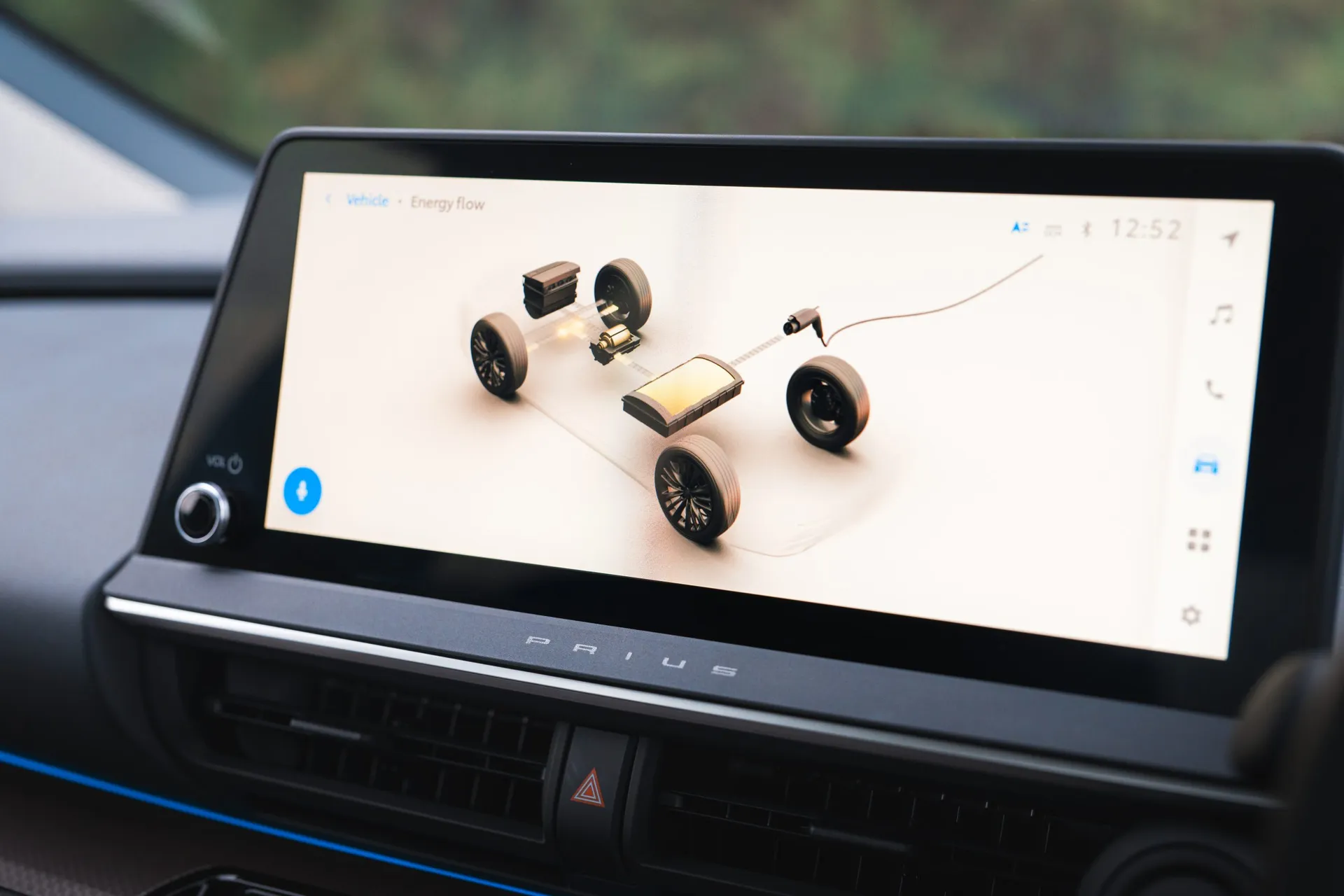
To achieve that in the Design trim model, you would have to be charging up at every opportunity and completing most journeys on electric power alone. With the Excel trim, it's claimed to offer a combined economy of 403.5mpg. Either is most impressive.
In the real world, we reckon most Prius owners will see around mid-50s consumption in mixed driving. That compares well to most of the Toyota's hybrid rivals, so it's still a sound bet even if you don't have ready access to an EV charge point at every stop.
Toyota Prius reliability and warranty
Toyota is consistently one of the highest scoring makes in the HonestJohn Satisfaction survey, and in the most recent one the company came home in sixth place out of 29 car makers. Its Lexus sister brand was ranked number one, so it's safe to assume the Prius will be a reliable, trusty car.
Toyota Prius Insurance groups and costs
Whichever of the two Toyota Prius trim levels you pick - Design or Excel - you'll be paying your premium based on a group 31 ranking. That's similar to many plug-in hybrid rivals and lower (and therefore cheaper) than many full EVs.
VED car tax: What is the annual road tax on a Toyota Prius?
Thanks to the Toyota Prius emitting between 12- and 17g/km of carbon dioxide, it qualifies for free road tax in its first year. This is due to the plug-in Prius being ranked as an alternative fuel car and therefore entitled to a £10 discount on its road tax, which cancels out the nominal £10 of Vehicle Excise Duty it would otherwise be liable for when new.
After that first year, the Prius will pay road tax of £180 at current rates, which again includes that £10 discount.
The Excel trim just avoids paying the additional £410 in tax for cars costing more than £40,000 when new thanks to a list price just £5 below that threshold, though this does mean you have to do without any options as this would push the car over the bar and you'd pay much more in road tax.
Toyota Prius price
"It's too early to say how this Toyota Prius will perform in the used market, but experience of previous generations suggest it should do well at hanging on to its value."
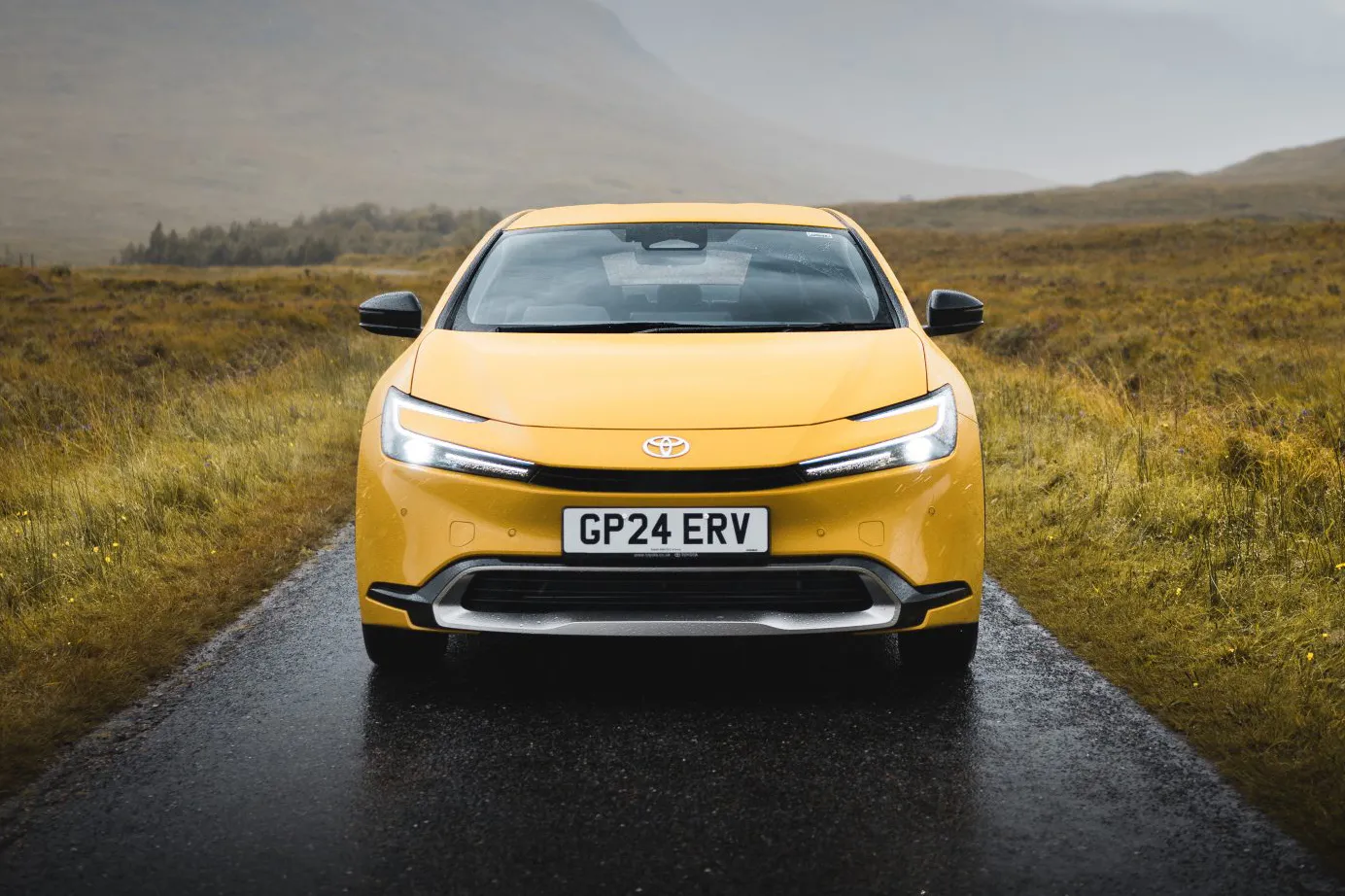
Buying a new Prius will cost you £37, 315 for the Design trim and £39,995 for the Excel. That's before you add optional extras that encompass metallic paint or either of the Essential Protection Packs that come with mudflaps, boot liner and seatbelt protection. Just be wary of options with the Excel trim as it will push its list price above £40,000 and you'll become liable for much heftier road tax when it reaches its first birthday.
Trim levels and standard equipment
Toyota offers only two trims for the Prius, starting with the Design that is the one we'd choose. It comes on 17-inch alloy wheels and can also be spotted by its plain black surrounds for the wheelarches and lower grille.
The Design has automatic headlights and wipers, electrically adjusted, heated and folding door mirrors, keyless entry and ignition, and electric windows all round. It has a three-spoke steering wheel trimmed in leather, 7-inch digital dash display, and 12.3-inch infotainment touchscreen with Apple CarPlay and Android Auto.
The driver benefits from manual seat height adjustment and electric lumbar adjustment, adaptive cruise control, and twin front cupholders.
Upgrade to the Excel trim and you gain 19-inch alloy wheels, gloss black exterior trims, and a powered tailgate. This version further gains heated and cooled front seats, electric front seat adjustment with position memory, noise reducing side windows, and digital rear-view camera.
Ask the heycar experts: common questions
Is the Toyota Prius a self-charging hybrid?
Why does the Toyota Prius have such impressive claimed MPG figures?
Is the Toyota Prius a good car?
Get our latest advice, news and offers
Keep me updated by email with the latest advice, news and offers from heycar.
By submitting you agree to our privacy policy
